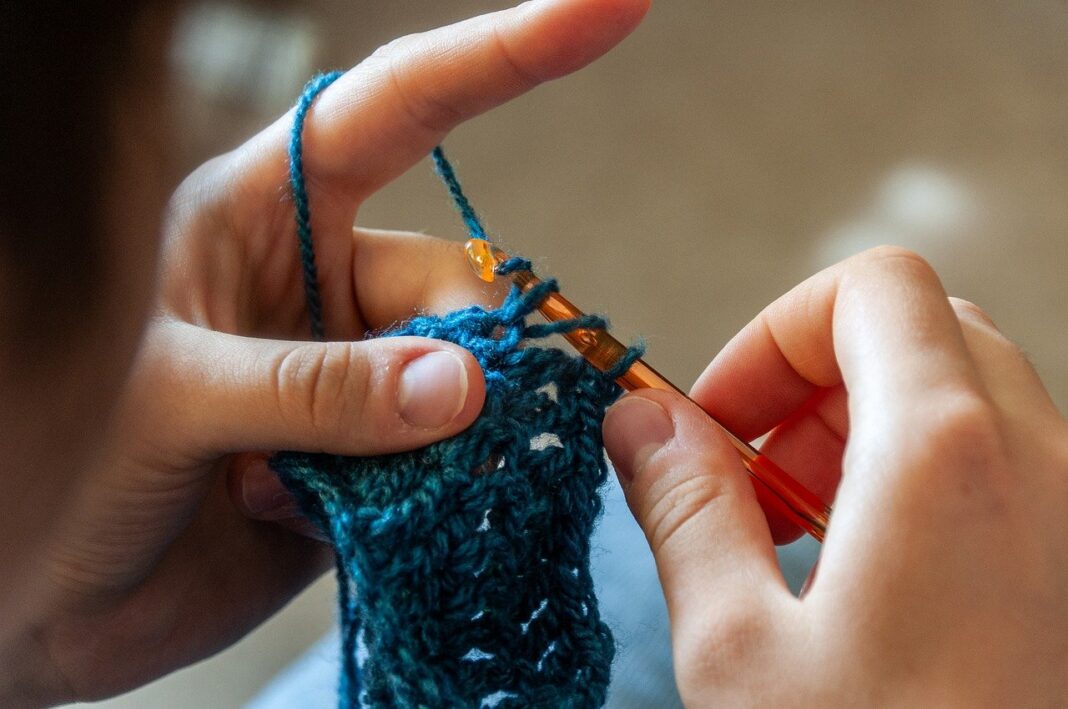Introduction
Crochet is a versatile and creative craft that has been cherished for generations. Whether you’re just starting out or you’ve been crocheting for years, understanding different crochet stitches is key to expanding your skills and creating beautiful projects. This guide will delve into various crochet stitches, ranging from basic to advanced, and provide you with tips, techniques, and patterns to help you master them.
Understanding Crochet Stitches
Crochet stitches are the building blocks of all crochet projects. Each stitch contributes to the overall texture, shape, and design of your work. Learning a variety of stitches allows you to create intricate patterns, adjust the fabric’s density, and experiment with different styles.
Basic Crochet Stitches
Before diving into more complex stitches, it’s essential to master the basic stitches that form the foundation of most crochet projects.
Chain Stitch (CH)
The chain stitch is the starting point for almost all crochet projects. It forms the foundation chain from which other stitches are built.
- How to make it: Begin with a slip knot on your hook. Yarn over (YO) and pull through the loop on your hook. Repeat to create a chain.
- Usage: Foundation chains, spacing between stitches, and decorative edges.
Slip Stitch (SL ST)
The slip stitch is the simplest stitch in crochet. It’s often used to join rounds or move the yarn across a row without adding height.
- How to make it: Insert the hook into the desired stitch, YO, and pull through both loops on the hook.
- Usage: Joining rounds, seam work, edging, and shaping.
Single Crochet (SC)
Single crochet is one of the most common stitches. It creates a dense, tight fabric.
- How to make it: Insert the hook into the next stitch, YO, pull up a loop, YO, and pull through both loops on the hook.
- Usage: Amigurumi, borders, and creating dense fabrics.
Half Double Crochet (HDC)
The half double crochet stitch is slightly taller than a single crochet and creates a somewhat looser fabric.
- How to make it: YO, insert the hook into the next stitch, YO, pull up a loop, YO, and pull through all three loops on the hook.
- Usage: Blankets, scarves, and garments.
Double Crochet (DC)
Double crochet is taller than single and half double crochet, making it ideal for projects where you want a looser, more open fabric.
- How to make it: YO, insert the hook into the next stitch, YO, pull up a loop, YO, pull through two loops, YO, and pull through the remaining two loops.
- Usage: Shawls, blankets, and granny squares.
Intermediate Crochet Stitches
Once you’re comfortable with the basics, you can start exploring intermediate stitches that add texture and complexity to your work.
Treble Crochet (TR)
The treble crochet stitch is taller than a double crochet and creates a more open fabric.
- How to make it: YO twice, insert the hook into the next stitch, YO, pull up a loop, YO, pull through two loops (three times) until one loop remains on the hook.
- Usage: Lace patterns, shawls, and airy garments.
Double Treble Crochet (DTR)
This stitch is even taller than the treble crochet and is used for creating intricate lace patterns.
- How to make it: YO three times, insert the hook into the next stitch, YO, pull up a loop, YO, pull through two loops (four times) until one loop remains on the hook.
- Usage: Lacework, borders, and decorative elements.
Cluster Stitch
The cluster stitch groups several stitches together at the top to create a textured, raised effect.
- How to make it: YO, insert the hook into the stitch, YO, pull up a loop, YO, pull through two loops. Repeat this process in the same stitch a specified number of times, then YO and pull through all loops on the hook.
- Usage: Afghans, hats, and textured garments.
Shell Stitch
The shell stitch is a beautiful pattern that creates a scalloped effect, often used for edging and decorative projects.
- How to make it: Work multiple stitches (usually DC) into the same stitch or space, then skip a few stitches and repeat.
- Usage: Borders, blankets, and feminine details.
Advanced Crochet Stitches
For those looking to challenge themselves, advanced stitches offer unique textures and intricate designs.
Bobble Stitch
The bobble stitch creates a raised, 3D effect on the fabric, similar to a small, rounded bump.
- How to make it: YO, insert the hook into the stitch, YO, pull up a loop, YO, pull through two loops. Repeat this process several times in the same stitch, leaving the last loop of each incomplete, then YO and pull through all loops on the hook.
- Usage: Textured blankets, sweaters, and hats.
Popcorn Stitch
The popcorn stitch creates a dense, textured cluster that stands out from the fabric.
- How to make it: Work five DC into the same stitch. Remove the hook from the last loop, insert it into the first of the five DC, pick up the dropped loop, and pull it through the first stitch.
- Usage: Decorative motifs, blankets, and scarves.
Crossed Double Crochet
This stitch involves crossing one double crochet stitch over another, creating a woven effect.
- How to make it: Skip one stitch, work a DC into the next stitch, then work a DC into the skipped stitch, crossing over the first DC.
- Usage: Textured fabrics, scarves, and hats.
Crocodile Stitch
The crocodile stitch is a dramatic, scale-like stitch that adds a lot of texture and dimension.
- How to make it: Work multiple stitches (usually DC) around the post of a stitch from a previous row, then repeat on the next post, creating a layered, scale effect.
- Usage: Shawls, bags, and decorative pieces.
Combining Crochet Stitches
Combining different stitches within a project can create stunning effects and textures. For example, alternating rows of single crochet and double crochet can give a unique texture, while combining bobble and shell stitches can add depth and interest to your work.
Tips for Combining Stitches
- Gauge: Always check your gauge when combining stitches to ensure consistency in your fabric.
- Patterns: Start with patterns that suggest combining stitches if you’re new to this technique.
- Experiment: Don’t be afraid to experiment with different combinations to see what effects you can create.
Reading Crochet Patterns
Understanding crochet patterns is crucial for progressing beyond basic stitches. Patterns typically include abbreviations, symbols, and diagrams to guide you through the project.
Common Abbreviations
- CH: Chain
- SC: Single Crochet
- DC: Double Crochet
- TR: Treble Crochet
- YO: Yarn Over
How to Read Diagrams
Crochet diagrams, or charts, visually represent stitches using symbols. Each symbol corresponds to a stitch, and the pattern is read in the direction indicated (usually right to left, bottom to top).
Tips for Pattern Reading
- Practice: Start with simple patterns to get used to the abbreviations and diagrams.
- Reference Guides: Keep a reference guide handy for abbreviations and symbols you might not recognize.
- Count: Always count your stitches to ensure accuracy, especially when working with complex patterns.
Common Crochet Stitch Mistakes and How to Avoid Them
Even experienced crocheters can make mistakes. Understanding common errors can help you avoid them and improve your crochet skills.
Uneven Tension
Uneven tension can result in inconsistent stitch sizes and an uneven fabric.
- Solution: Practice maintaining consistent tension and take breaks if your hands start to cramp.
Losing or Gaining Stitches
It’s easy to accidentally add or lose stitches, especially when working on larger projects.
- Solution: Count your stitches at the end of each row to ensure you haven’t added or lost any.
Twisting Chains
When working with a long foundation chain, it can twist, making it difficult to work into.
- Solution: Periodically check your chain to ensure it’s not twisted, or start with a shorter chain and add as needed.
Misinterpreting Patterns
Misreading a pattern can lead to errors in your project.
- Solution: Take your time to understand the pattern, and don’t hesitate to look up unfamiliar terms or techniques.
Advanced Techniques in Crochet Stitches
For those looking to further challenge themselves, advanced techniques like Tunisian crochet and tapestry crochet offer new ways to explore the craft.
Tunisian Crochet
Tunisian crochet, also known as Afghan crochet, uses a longer hook and combines elements of knitting and crochet.
- Basic Stitch: Tunisian Simple Stitch (TSS) – Insert the hook under the front vertical bar, YO, and pull up a loop. Continue across the row, then work back to close the loops.
- Usage: Blankets, sweaters, and textured fabrics.
Tapestry Crochet
Tapestry crochet involves working with multiple colors of yarn at the same time, carrying the unused colors along the row.
- Basic Technique: Work each stitch in the desired color, keeping the unused colors inside the stitches to hide them.
- Usage: Bags, hats, and intricate colorwork designs.
Practical Crochet Stitch Applications
Understanding how to use different stitches in practical projects can help you apply your knowledge and create beautiful, functional items.
Blankets and Afghans
Different stitches can be used to create a variety of textures and patterns in blankets and afghans. For instance, using double crochet stitches can create a warm, airy blanket, while combining bobble and shell stitches can add texture and interest.
Scarves and Shawls
Crochet stitches like treble crochet and shell stitch are ideal for making scarves and shawls that are both functional and decorative. These projects also allow you to experiment with combining different stitches and yarns.
Garments and Accessories
Crochet stitches can be used to create everything from sweaters and hats to bags and gloves. Experimenting with different stitches can help you create unique, personalized pieces that showcase your style and skill.
Conclusion
Crochet is a versatile and rewarding craft that offers endless possibilities for creativity. By mastering a variety of crochet stitches, from basic to advanced, you can expand your skills and create a wide range of projects, from simple scarves to intricate lacework. Whether you’re a beginner or an experienced crocheter, there’s always something new to learn and explore in the world of crochet stitches.


















